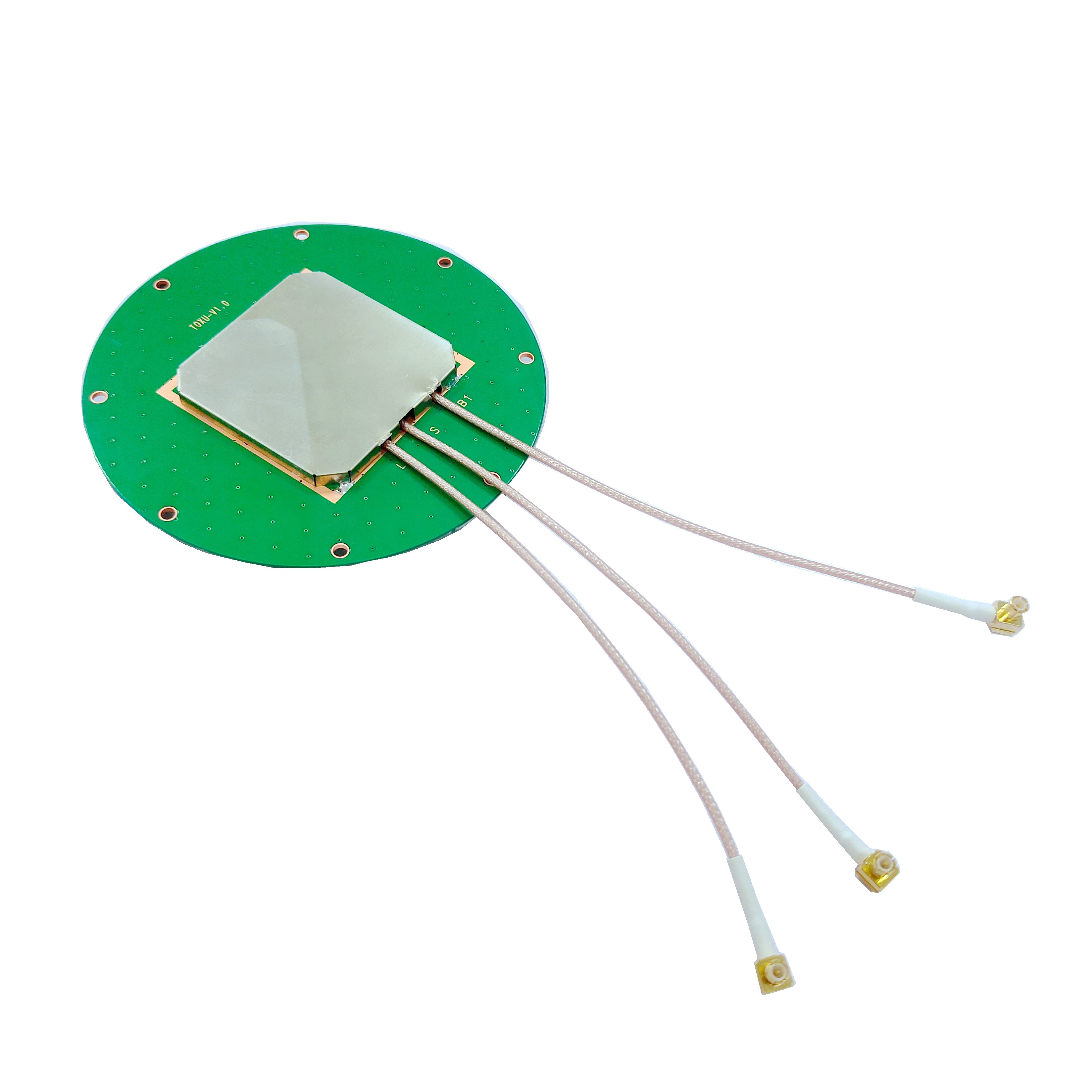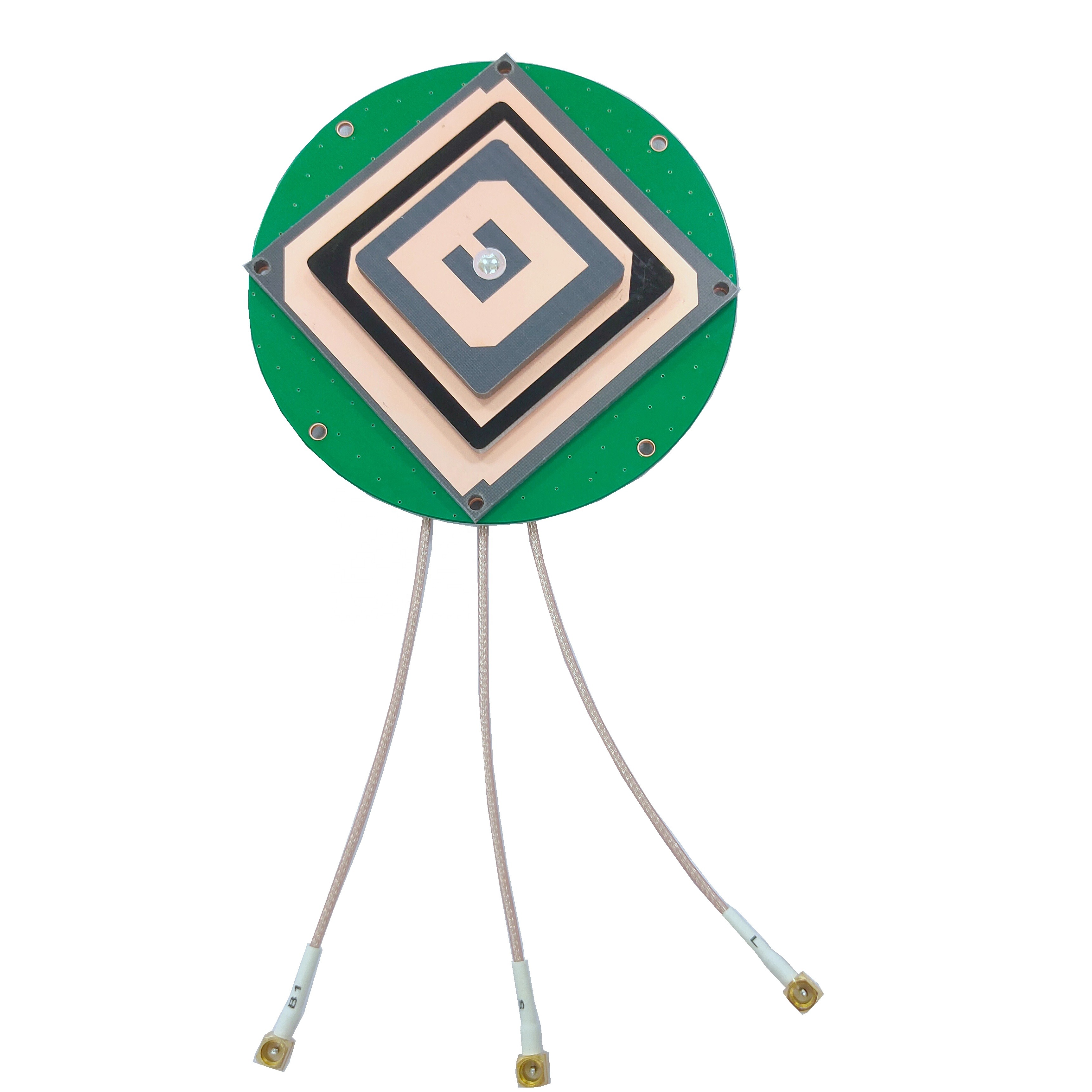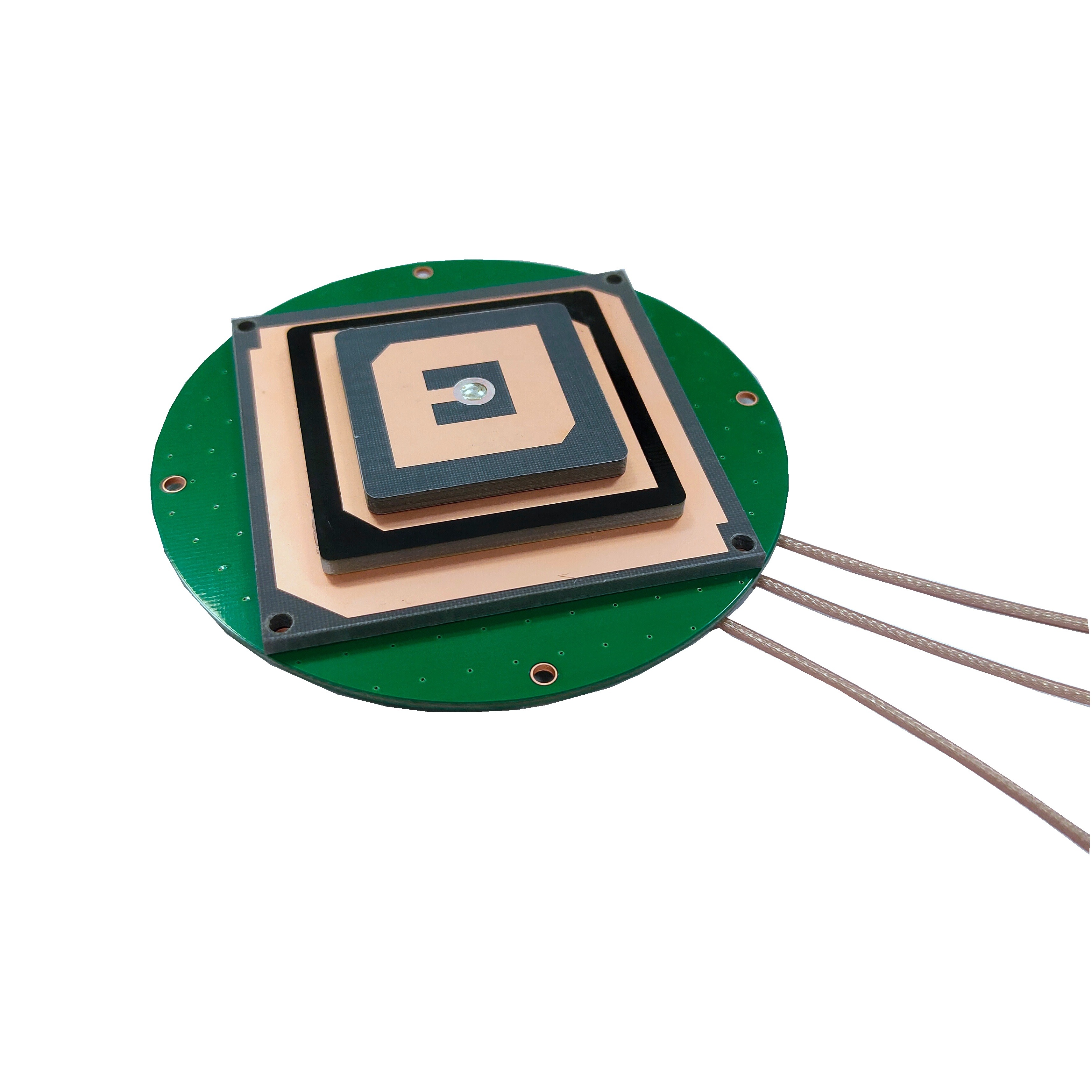5.1 Current Applications
5.1.1 Geospatial Surveying and Mapping
Compact Surveying GNSS Antennas are extensively used in geospatial surveying and mapping applications. In land surveying, they are used to accurately measure property boundaries, create detailed topographic maps, and establish control points for construction projects. For example, when surveying a large tract of land for a new housing development, surveyors use these antennas to precisely mark the corners of each lot, ensuring that the land is divided correctly and that the construction of houses and infrastructure adheres to local regulations. In mapping applications, GNSS - equipped drones with Compact Surveying GNSS Antennas are increasingly being used to capture high - resolution elevation data and create 3D maps of large areas. These maps are valuable for a wide range of purposes, including urban planning, environmental monitoring, and disaster management.
5.1.2 Precision Agriculture
The agricultural industry has seen a significant adoption of Compact Surveying GNSS Antennas in recent years. Precision agriculture techniques rely on accurate positioning data to optimize various farming operations. With the help of these antennas, farmers can precisely map their fields, identify areas with different soil characteristics, and apply fertilizers, pesticides, and water more efficiently. For instance, variable - rate application systems, which use GNSS - guided equipment, can adjust the amount of inputs based on the specific needs of each part of the field, reducing waste and increasing crop yields. In addition, GNSS - enabled tractors and other agricultural machinery can be automated to follow precise paths, improving the accuracy of planting, tilling, and harvesting operations.
5.1.3 Construction and Infrastructure Projects
In the construction and infrastructure sectors, Compact Surveying GNSS Antennas play a crucial role in ensuring the accurate placement of buildings, roads, bridges, and other structures. During the construction process, surveyors use these antennas to set out the positions of foundation markers, check the alignment of structural elements, and monitor the progress of the project. For large - scale infrastructure projects such as highway construction, GNSS - based systems can be used to guide earthmoving equipment, ensuring that the terrain is graded to the correct specifications. In addition, these antennas are used for deformation monitoring of buildings and bridges over time, allowing for early detection of any structural issues and ensuring the safety of the infrastructure.
5.2 Future Trends
5.2.1 Integration with Other Technologies
One of the major future trends for Compact Surveying GNSS Antennas is their deep integration with other cutting-edge technologies, which will further expand their application scope and enhance overall performance.
The integration with LiDAR (Light Detection and Ranging) technology is particularly promising. LiDAR systems excel at capturing high-resolution 3D point clouds of the surrounding environment, while Compact Surveying GNSS Antennas provide precise positional data. By combining these two technologies, users can obtain both accurate spatial coordinates and detailed environmental features simultaneously. For example, in urban mapping projects, a LiDAR-equipped vehicle with a Compact Surveying GNSS Antenna can collect 3D data of buildings, roads, and vegetation, with each point in the LiDAR point cloud tagged with precise GNSS coordinates. This integrated solution eliminates the need for separate data collection and post-processing steps, significantly improving efficiency and reducing errors. In addition, in forestry inventory surveys, the combined system can accurately measure tree heights, diameters, and positions, providing comprehensive data for forest management and ecological research.
Another key integration trend is with Inertial Measurement Units (IMUs). IMUs consist of accelerometers and gyroscopes that can measure the acceleration and angular velocity of a moving object. When integrated with Compact Surveying GNSS Antennas, IMUs can fill in the gaps in GNSS signal reception during short-term signal outages, such as when the antenna passes through a tunnel, under a dense forest canopy, or in an urban canyon with tall buildings blocking satellite signals. For instance, in autonomous driving applications for construction vehicles, the integrated GNSS-IMU system ensures that the vehicle maintains accurate positioning even when GNSS signals are temporarily lost, preventing accidents and ensuring the vehicle follows the planned path. In marine surveying, where GNSS signals may be disrupted by waves or weather conditions, the IMU integration provides continuous positioning data, ensuring the accuracy of hydrographic maps and underwater structure surveys.
Furthermore, the integration with Internet of Things (IoT) platforms is set to revolutionize the way Compact Surveying GNSS Antennas are used. IoT-enabled antennas can transmit positioning data in real-time to a central cloud platform, where the data can be analyzed, visualized, and shared among multiple users. In precision agriculture, for example, a network of IoT-connected Compact Surveying GNSS Antennas installed on farm equipment can send real-time positioning and operational data to a farmer’s dashboard. The farmer can then monitor the progress of farming operations, adjust input application rates remotely, and make data-driven decisions to optimize crop yields. In smart city projects, IoT-integrated antennas can provide real-time data on the movement of public transportation, the condition of infrastructure, and the flow of pedestrians, enabling city planners to improve traffic management, enhance public safety, and reduce energy consumption.
5.2.2 Enhanced Performance and Miniaturization
As technology continues to advance, Compact Surveying GNSS Antennas will see significant improvements in performance, with a particular focus on increasing accuracy, reducing power consumption, and achieving further miniaturization.
In terms of accuracy, future antennas will leverage advanced signal processing algorithms and multi-frequency reception to achieve sub-centimeter-level accuracy. Multi-frequency reception allows the antenna to receive signals from multiple frequency bands of GNSS constellations, which helps to reduce errors caused by ionospheric and tropospheric delays. For example, modern GNSS constellations such as Galileo and BeiDou transmit signals in multiple frequency bands, and future Compact Surveying GNSS Antennas will be designed to receive these signals simultaneously. By processing data from multiple frequencies, the antenna can more accurately correct for atmospheric errors, resulting in higher positioning accuracy. This level of accuracy will be particularly valuable in applications such as geodetic surveys, where precise measurements of the Earth’s crustal movements are essential for studying tectonic activity and predicting natural disasters.
Power consumption is another critical area for improvement. Many field applications of Compact Surveying GNSS Antennas, such as environmental monitoring in remote areas or wildlife tracking, rely on battery power. Reducing the power consumption of the antenna will extend the battery life of the device, allowing for longer periods of operation without the need for recharging or battery replacement. Future antennas will incorporate low-power electronics, such as energy-efficient amplifiers and signal processors, and will use advanced power management techniques to minimize power usage during idle periods. For example, the antenna can automatically enter a low-power mode when it is not actively receiving signals, and wake up quickly when signals are detected. This will be especially beneficial for IoT-connected antennas, which may be deployed in remote locations where access to power is limited.
Miniaturization is also a key trend, with future Compact Surveying GNSS Antennas becoming even smaller and lighter. This will enable their integration into a wider range of devices, including wearable technology, small UAVs, and micro-robots. For instance, miniaturized antennas can be embedded in smartwatches or fitness trackers used by surveyors, allowing them to track their own position while collecting data in the field. In the case of small UAVs, smaller and lighter antennas will reduce the weight of the drone, increasing its flight time and payload capacity. This will make it possible to use UAVs for more extensive surveying missions, such as mapping large areas of land or inspecting tall structures. Advanced manufacturing techniques, such as 3D printing and microelectromechanical systems (MEMS) technology, will play a crucial role in achieving this miniaturization. 3D printing allows for the creation of complex antenna structures with precise dimensions, while MEMS technology enables the fabrication of tiny electronic components that can be integrated into the antenna design.
5.2.3 Artificial Intelligence (AI) and Machine Learning (ML) Integration
The integration of Artificial Intelligence (AI) and Machine Learning (ML) algorithms into Compact Surveying GNSS Antennas is set to transform their capabilities, enabling them to adapt to changing environments, improve signal processing, and provide more intelligent insights.
AI and ML algorithms can be used to enhance signal processing by automatically identifying and mitigating interference. Traditional interference mitigation techniques rely on predefined filters and rules, which may not be effective against new or unknown sources of interference. AI-powered antennas, on the other hand, can learn from historical data to recognize patterns of interference and develop adaptive filtering strategies. For example, the antenna can use ML algorithms to analyze the characteristics of incoming signals, distinguish between legitimate GNSS signals and interference, and apply the appropriate filtering techniques to reject the interference. This will be particularly useful in urban environments, where the number of potential interference sources is constantly increasing, and in military applications, where intentional jamming is a significant threat.
In addition, AI and ML can be used to improve the accuracy of position calculations by correcting for errors caused by environmental factors. For instance, ML algorithms can analyze data on atmospheric conditions, such as temperature, humidity, and pressure, and use this information to more accurately model and correct for ionospheric and tropospheric delays. The algorithms can also learn from past positioning errors in specific locations and adjust the position calculation accordingly. This adaptive error correction will result in more consistent and reliable positioning data, even in challenging environments.
Furthermore, AI-powered Compact Surveying GNSS Antennas can provide intelligent insights by analyzing the positioning data they collect. For example, in construction projects, the antenna can track the movement of construction equipment and use AI algorithms to identify inefficiencies in the construction process, such as equipment idle time or unnecessary movements. The antenna can then provide recommendations to optimize the workflow, reducing costs and improving productivity. In environmental monitoring, the antenna can collect data on the movement of glaciers or the spread of wildfires and use ML algorithms to predict future changes, enabling early warning systems and more effective disaster response.
Compact Surveying GNSS Antennas have evolved from simple, single-constellation receivers to sophisticated, multi-functional tools that are essential in a wide range of industries, including geospatial surveying, precision agriculture, construction, and environmental monitoring. Their ability to provide high-accuracy positioning data, combined with their compact and lightweight design, has made them indispensable for field applications where portability and reliability are critical.
Throughout this analysis, we have explored the key aspects of Compact Surveying GNSS Antennas, from their overview and design to their working principles, advantages, challenges, applications, and future trends. The overview highlighted the growing demand for these antennas driven by the expansion of industries that require precise positioning, while the design and construction section detailed the structural components, antenna elements, and material selection that contribute to their performance and durability. The working principles section explained how these antennas receive and process GNSS signals to calculate accurate positions, emphasizing the importance of the phase center in achieving high accuracy.
The advantages of Compact Surveying GNSS Antennas, including their high accuracy, compact design, and multi-constellation compatibility, have enabled significant advancements in various fields. However, they also face challenges such as signal interference, environmental sensitivity, and cost-performance trade-offs, which require ongoing innovation to address. The current applications section demonstrated how these antennas are being used to improve efficiency and accuracy in geospatial surveying, precision agriculture, and construction, while the future trends section outlined the potential for integration with other technologies, enhanced performance, and AI-powered capabilities.
Looking ahead, the future of Compact Surveying GNSS Antennas is bright, with continued advancements in technology expected to further expand their capabilities and application scope. The integration with LiDAR, IMUs, and IoT platforms will enable more comprehensive and efficient data collection, while enhancements in performance and miniaturization will allow for integration into even smaller and more diverse devices. The integration of AI and ML algorithms will transform these antennas from passive data receivers to active, intelligent tools that can adapt to changing environments and provide valuable insights.
In conclusion, Compact Surveying GNSS Antennas will continue to play a crucial role in shaping the future of geospatial technology and related industries. As they become more advanced, reliable, and accessible, they will enable new applications and innovations that we can only begin to imagine. Whether it is improving the accuracy of construction projects, optimizing agricultural practices, or monitoring the health of our planet, Compact Surveying GNSS Antennas will remain at the forefront of precision positioning technology, driving progress and innovation for years to come.




































































 Language
Language
 En
En Cn
Cn Korean
Korean

 Home >
Home > 







 18665803017 (Macro)
18665803017 (Macro)













